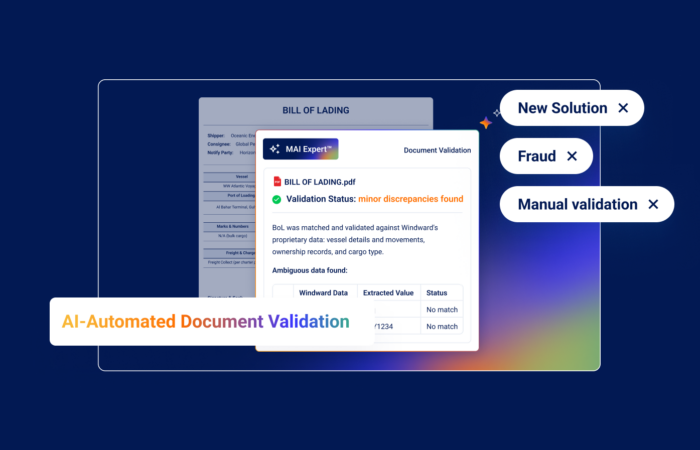Drawing the line on flag hopping

What’s inside?
The OFAC advisory published in May 2020 threw flag hopping into the spotlight. What went from a lesser-known tactic mainly associated with illegal fishing is now a core tenet of sanctions-related deceptive shipping practices. Nevertheless, flag hopping, unlike AIS manipulations or STS transfers, is left largely undefined and open to interpretation.
To provide actionable intelligence, Windward’s maritime AI separates legitimate flag changes from deceptive flag changes based on behavioral analysis of known offenders from SDN lists. Thereby eliminating 80% of flag hopping false positives in due diligence processes and lead investigations. Our algorithms analyze everything from flag change frequency, flag registration duration, and flag exploitability to deliver a clear picture of flag hopping in real-time.
Flag hopping in action: The Longbow Lake
This 330-meter crude oil tanker was added to the OFAC Specially Designated Nationals (SDN) list in October 2020. At the time of its designation, the vessel was sailing under the flag of Honduras, but when tracing back and analyzing its registry history, a risky history emerges.
Between 2012 and 2017, the vessel sailed under the Panamanian flag, the most popular flag in the world, and up until that point, its behavioral profile and flag utilization were low-risk. In October 2017, things took a turn for the worse. Over the course of the next three years up to the Longbow Lake’s designation, the tanker would go through three flags, including Marshal Islands, Liberia, and Honduras. All of which are considered flags of convenience due to lenient registration procedures and low requirements. Even after its designation, the vessel continued hopping to the flag of Djibouti and Tanzania, under which it sails today.

In the case of the Longbow Lake’s behavioral risk indicators, suspicious flag hopping was identified two years ahead of its designation, making it a powerful red flag when looking for illicit behavior.
Who are the culprits?
We noticed a clear vessel class division with a strong inclination towards subclasses enabling the transportation of sanctioned goods, particularly wet cargo. Much like the Longbow Lake, most of the vessels utilizing this deceptive shipping practice are crude oil tankers able to carry sanctioned oil across the oceans. In second and third places are general cargo vessels that can carry an array of commodities, including coal and sand, known income streams for the sanctioned regime of DPRK.

Overcoming false positives with AI
Analysis conducted by domain experts, including OFAC, has established a correlation between sanctions evasion-related behaviors and known offenders exhibiting behavior like the Longbow Lake. However, flag registration and registration changes are a commonly used financial tactic, meaning that malicious flag hopping is well-concealed in a sea of legitimate flag hopping.

Through maritime AI, instances of flag hopping can now be uncovered and investigated. The Windward platform automatically flags suspicious cases and has integrated this deceptive shipping practice into overall vessel compliance risk assessment.
Book your demo to learn how we can help you detect flag hopping at scale.








![[Webinar] Cross border crime](http://windward.ai/wp-content/uploads/2021/02/Webinar-Cross-border-crime-500x284.png)





